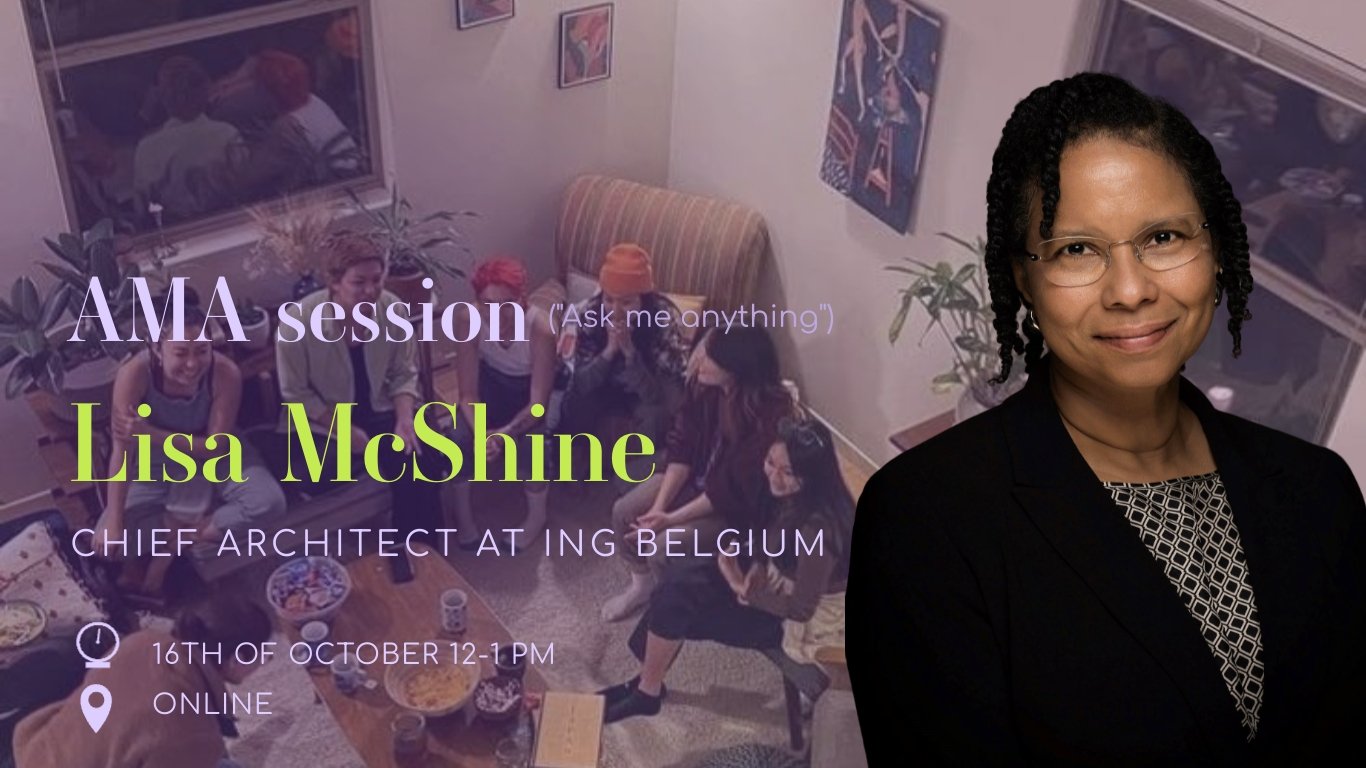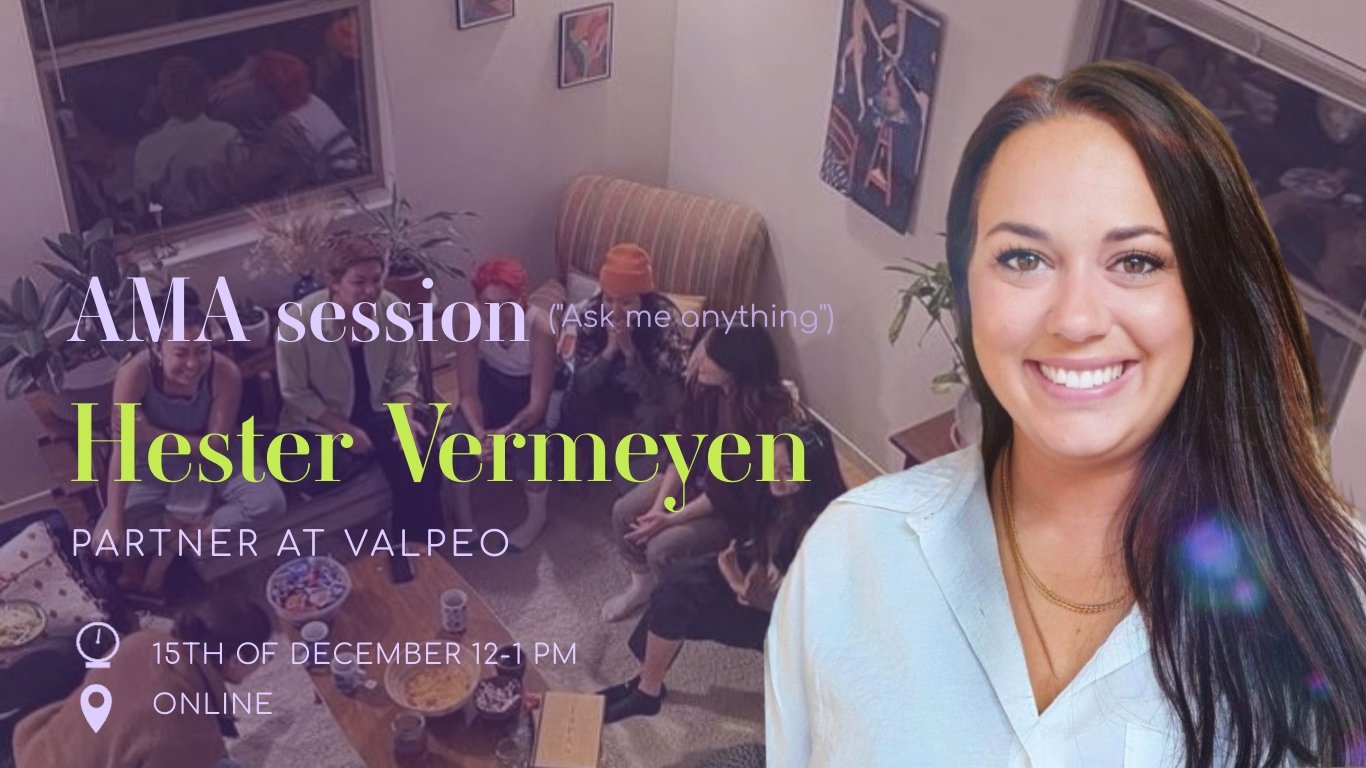Bloom: Aagje Reynders
Aagje Reynders taught herself to program when she was 16. Meanwhile she is 25 and a developer at Wheelhouse with a lot of insight and wisdom. She consciously does not participate in the 'hustle culture' and is proud of it. You can read why here. 👇
Started in self-study
Where does your passion for tech come from?
"The first time I came into contact with tech was through my father. He works as an IT manager at Campus Gasthuisberg of UZ Leuven. As a child, I sometimes saw him working at home during the weekend and I was always intrigued by what he was doing behind that computer. When I asked him what he was doing, he would tell me: 'Daddy is talking to the computer'. I found that an interesting concept that has always stuck with me. When I got a bit older, I started making websites in my spare time. They were just drag-and-drop websites, nothing with code then. I can't remember the exact age when I started, but as the websites had a lot of pink and flashy Winx Club images on them, I think I was between 10 and 12 years old!
Around the age of 14, I started to play games with friends more often. I started to realise that those games consist entirely of code. Someone programs lines of letters and numbers and that forms something very tangible and fun, and I wanted to be able to do that too. I went online to look up how to create such a thing but there was very little about it at the time. I didn't know where to turn and my father couldn't help me either. Today, there are things like CoderDojo or tools like Scratch that make it relatively easy for children to learn to program, but none of that existed back then. I was left hungry. When I was 16, I had my first boyfriend and he was studying IT. This was the opportunity for me, because I could learn to program myself using his textbooks. So during secondary school, where I studied ASO Science-Mathematics, I also did a self-study in programming. He could also help me then by telling me where to start; first HTML, then CSS, and so on.
Today, there are things like CoderDojo or tools like Scratch that make it relatively easy for children to learn to program, but none of that existed back then. I was left hungry.
At the end of secondary school, I knew that I wanted to continue with programming, but not the classic IT studies; they were too dry for me. I also wanted to make graphical things, create little works of art that looked cool and were built with code. That's how I ended up at the Interaction Design program at LUCA in Genk. This course is a combo of marketing, graphic design, UX and programming. That meant that on the one hand, I could do a bit of everything, but on the other hand, I had no real in-depth specialization. In hindsight, that was a good choice, because it makes me fairly unique when I compare my background to that of colleagues. They are technically very strong but then often have no theoretical background in graphic design, marketing and UX. So I'm really happy with my final choice of Interaction Design because otherwise I would never have been where I am now!"
From A.I. to Javascript and design
If we google you, we come across a lot of articles about your internship project at Craftworkz. You have programmed a kind of AI in a teddy bear; how did that come about?
"In my final year of school, we had to choose an internship. Of my group, I was one of the most technical students, and I wanted to use that for my internship assignment. The list of companies at Interaction Design all had marketing and graphic assignments. I then looked at a list of internships at applied computer science with technical projects and came across Craftworkz. That was at the very beginning, with five people who had founded the company not long ago. They were looking for interns for cool AI and IoT projects, and that sounded very appealing as a young student!
Their idea was to create a smart teddy bear to talk to children. This teddy bear would then analyze the conversations to map the child's emotional state on a dashboard. This was a huge challenge for me, and a big test of whether I was competent enough. In the end, it went really well and even made it onto various news channels! That was very overwhelming and I honestly don't remember how it got so much media attention. I had to do a few interviews myself and gave presentations together with my colleague Deevid. That was a great start to my career and I also got to start working full-time at Craftworkz afterwards."
Craftworkz then grew into the Raccoons group and Wheelhouse became a company within that cluster. What are you doing now?
"I work at Wheelhouse as a consultant, mainly for front-end and graphic design. Our company focuses on JavaScript consultancy. At the moment, I am on a project for AHOVOKS (Flemish government agency for Higher Education, Adult Education, Qualifications and Study Grants). I am also part of the front-end team and my role is to be the glue between the visual and the technical. I ensure that the house style of the Flemish government is correctly used within the AHOVOKS applications. We have a design system in Figma which contains all the design components for the different applications. In addition, I also program, but that is unfortunately rather limited in this project."
An independent go-getter
What were your greatest successes? What are you most proud of?
"I am most proud of the road I have traveled; the difficulties I have overcome. For example, the internship project was not easy. There were about ten trainees at Craftworkz and some of them had already received a job offer from the 1st or 2nd month, but not me. This weighed heavily on my mind. I was scared because they obviously couldn't take on everyone. I wanted to prove myself extra hard, and this paid off in the end, because by the end of my internship I did get a job offer.
Another example of something I overcame was how, with a mortal fear of speaking in front of an audience, I constantly gave presentations at school. Or how I learned to drive in a very short time, because otherwise I would not have made it to school. I can set my mind to something and then really bite the bullet and go for it."
Stereotypes and hustle culture
Do you have ambitions or dreams for your future?
"I actually have no idea where I want to be in 5 or 10 years. I know I want to grow, also on a personal level. But what exactly that is, is not so clear to me. I don't live to work, that is only one pillar of my life. That balance between free time and work is something that I guard very carefully, and that makes me perhaps less 'ambitious' professionally, and that is quite all right. I have come to a point where I am confident enough to say; my work stops after hours. I don't dream of programming and I don't want to work on it day and night. That ideal image or stereotype of striving for success by climbing the professional ladder is something that I would like to break. I don't need that and I think the majority of programmers do as well. I am fine where I am now.
This balance between free time and work is something that I guard very well, and it may make me less "ambitious" professionally, and that's perfectly OK.
If I have to formulate an ambition, it is to preserve the status quo for myself. I am now reading a book called "Brotopia: Breaking Up the Boys' Club of Silicon Valley" by Emily Chang. It's about stereotypes in the tech world and how they came to be. Understanding that history has helped me realize that it's really not necessary to fit into that stereotype of 'antisocial nerd who spends day and night in front of the computer'. I've been very insecure about that for a long time. In the 1940s and 1950s, there were many female programmers. Because of the two stereotypes of 'technical nerd' and 'charismatic young business man', there was no place for women in that world anymore. You can still see that today here in Belgium. In the future, I hope that this can change, and that I can perhaps contribute to it. My point of view is that this whole 'hustle culture' with big goals and strong ambitions doesn't make me happy, and that's okay."








